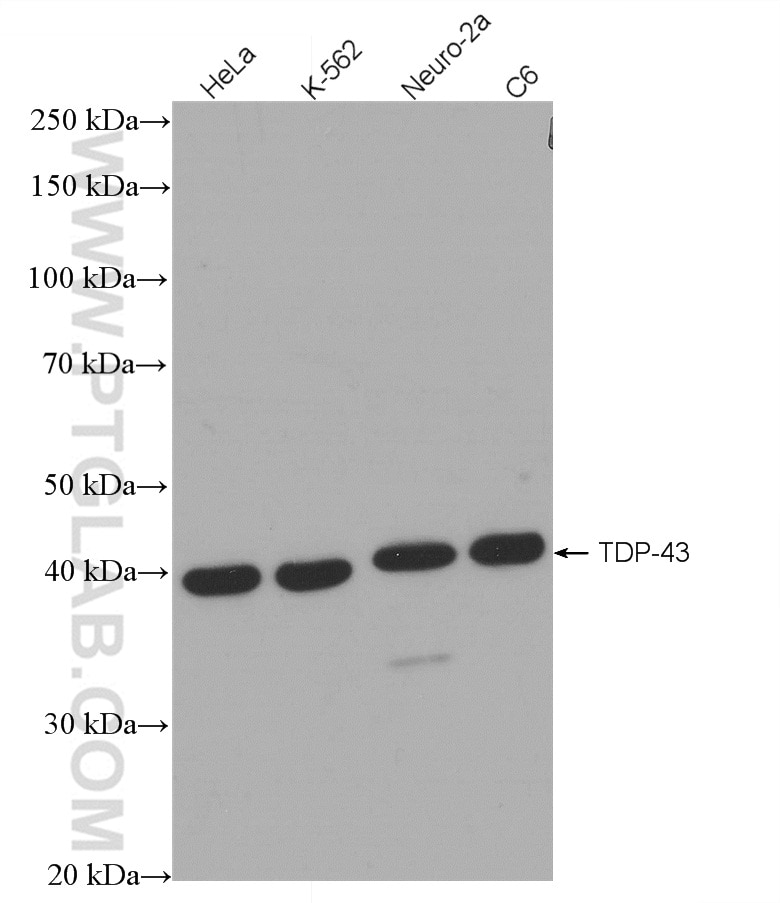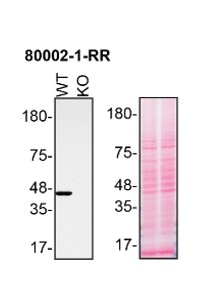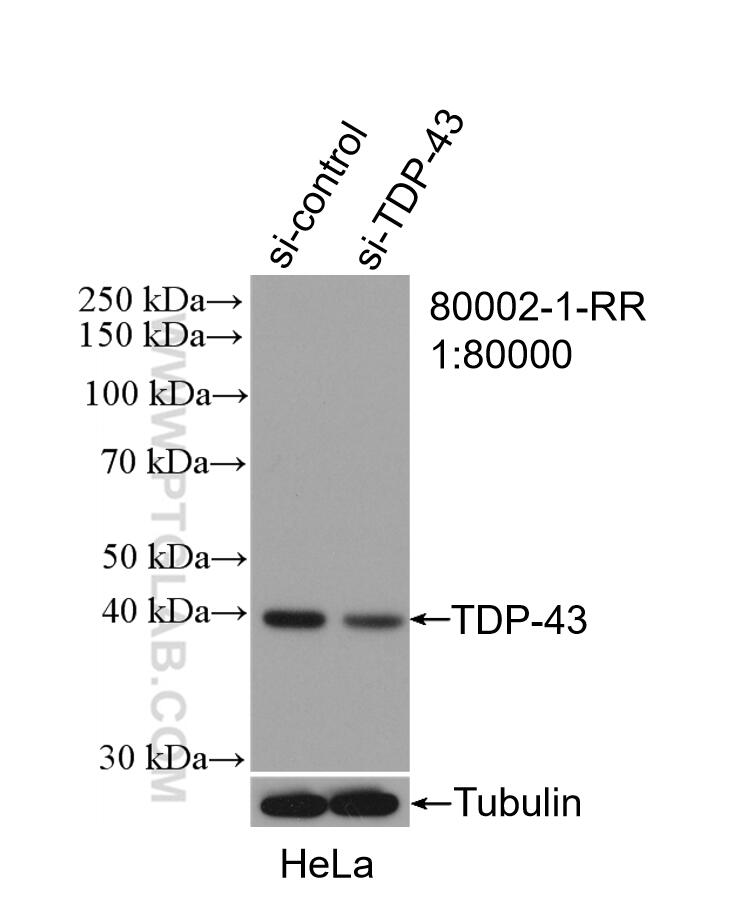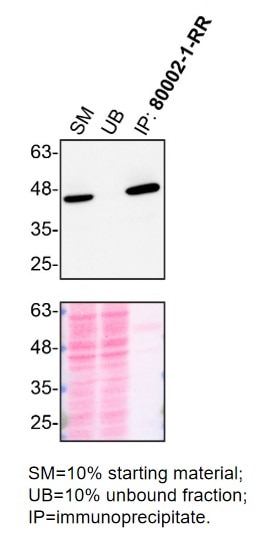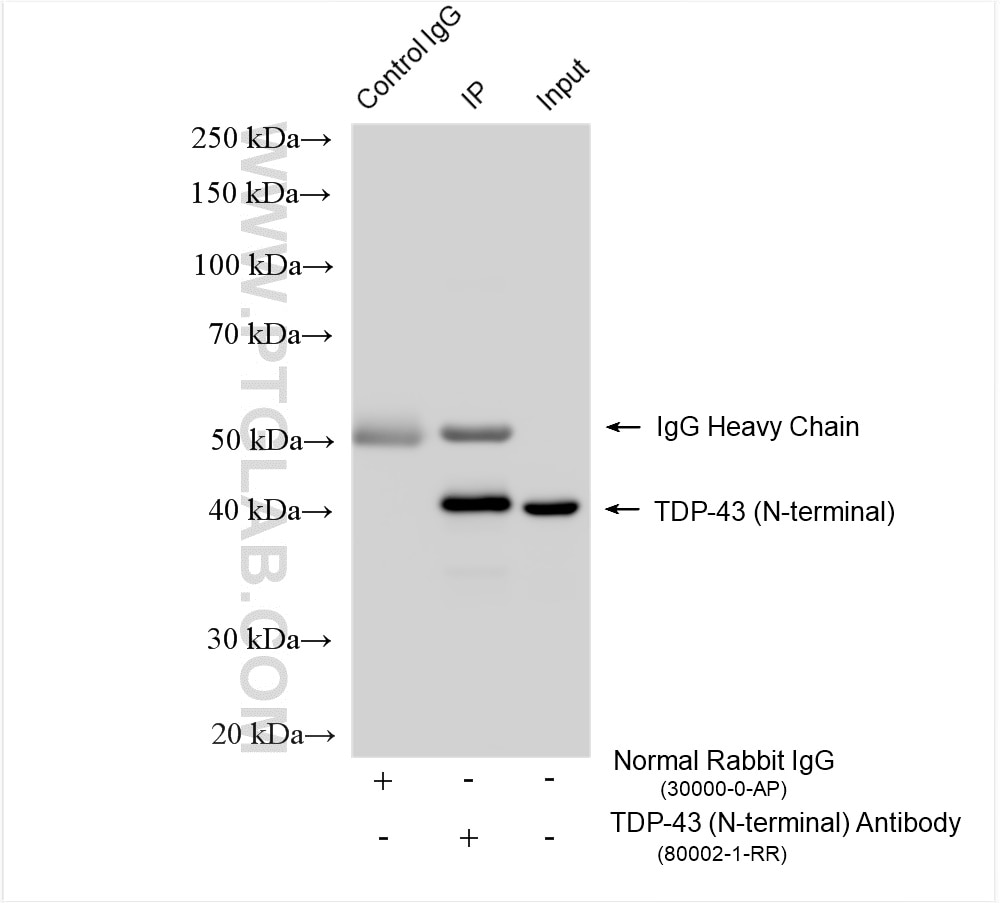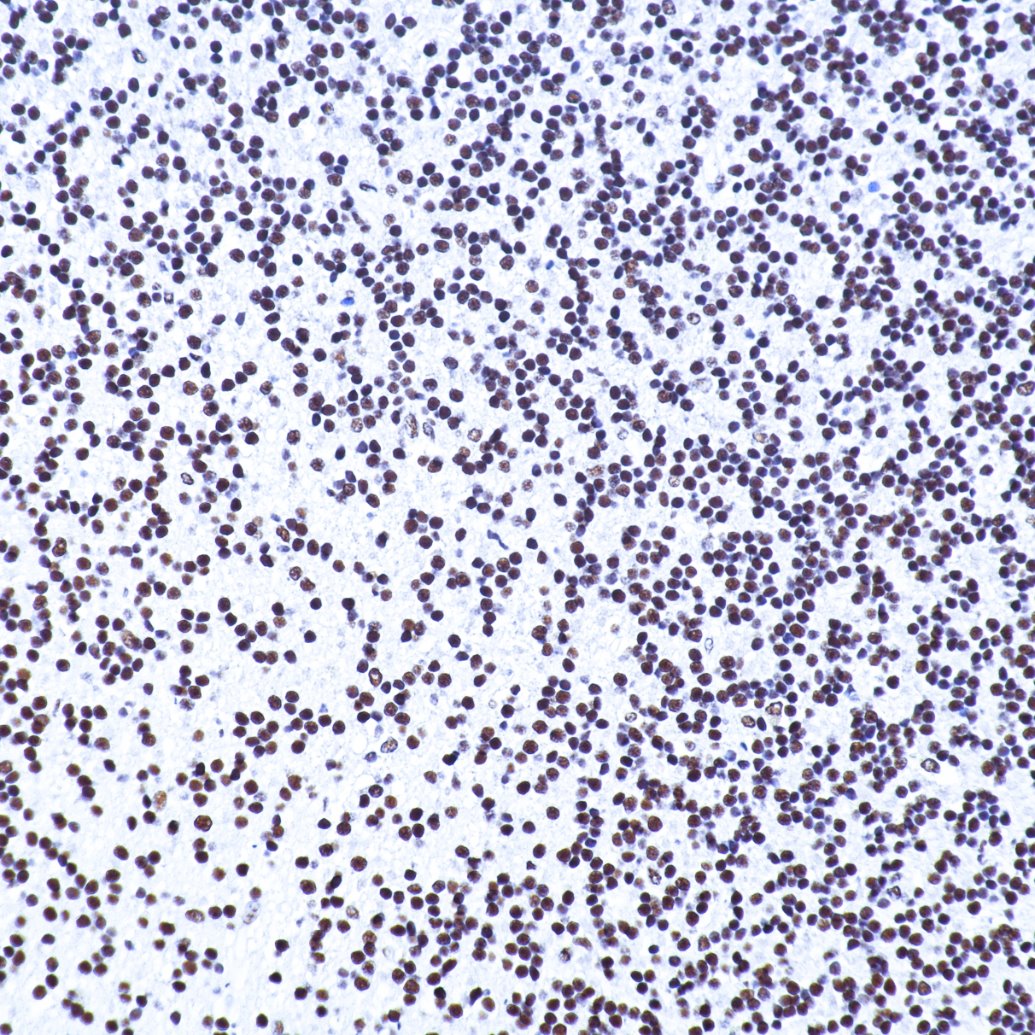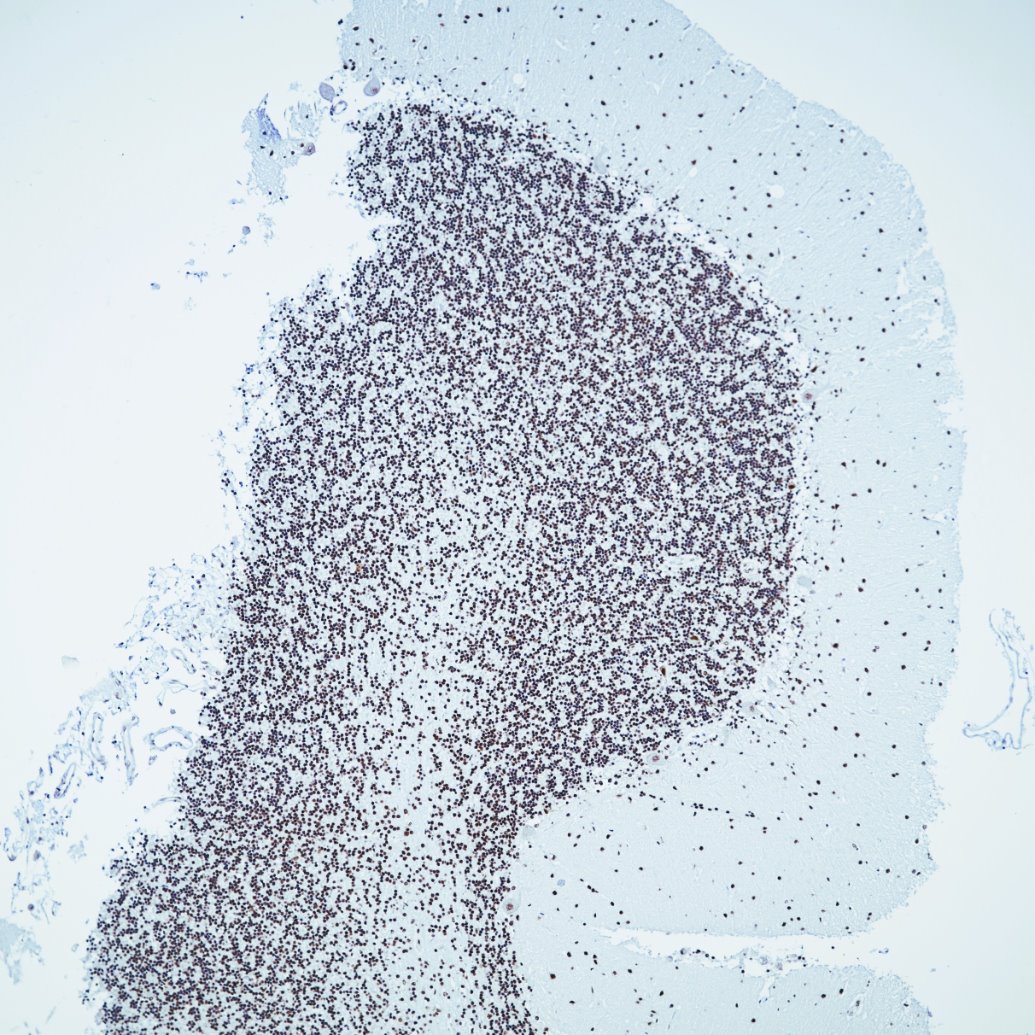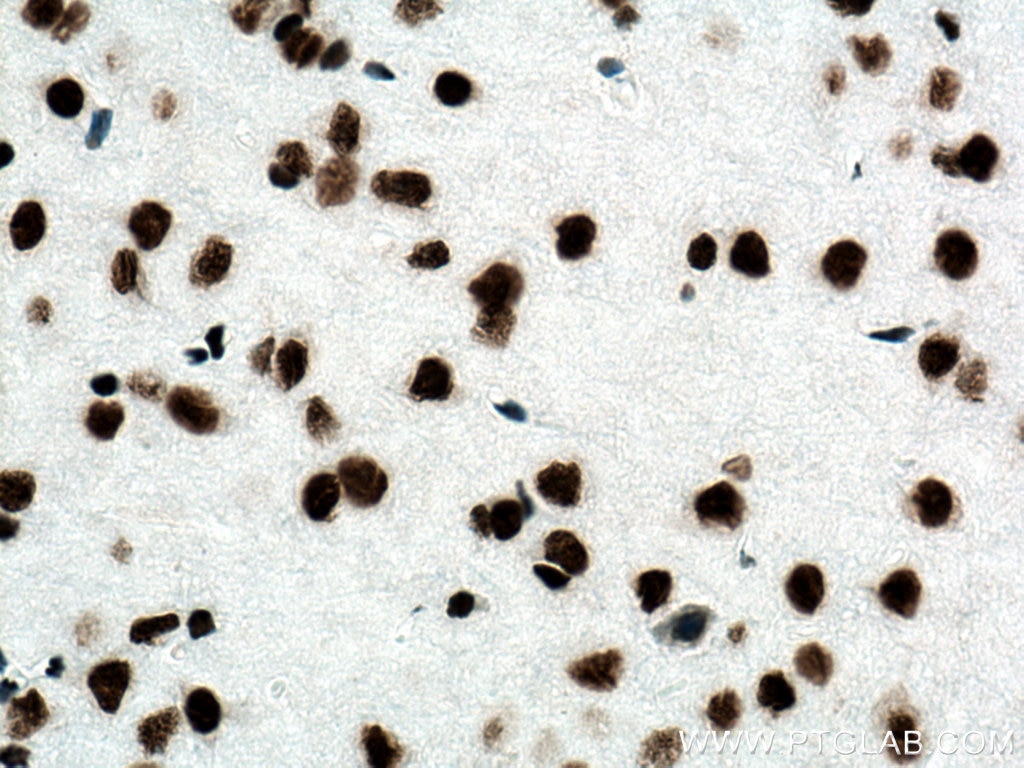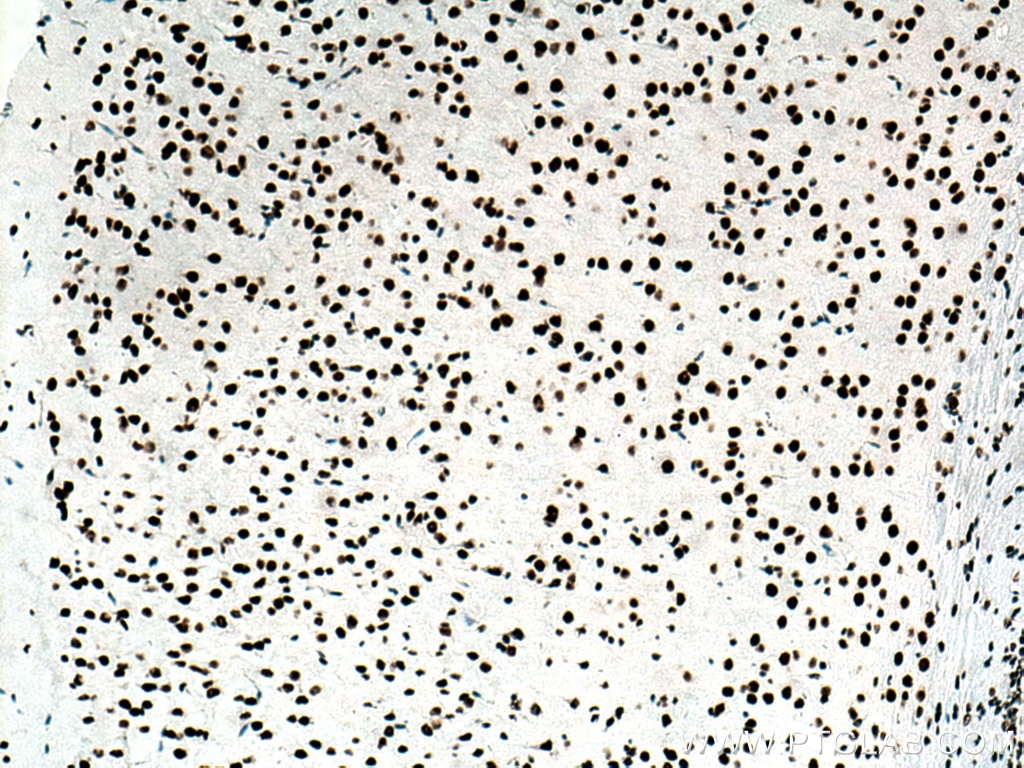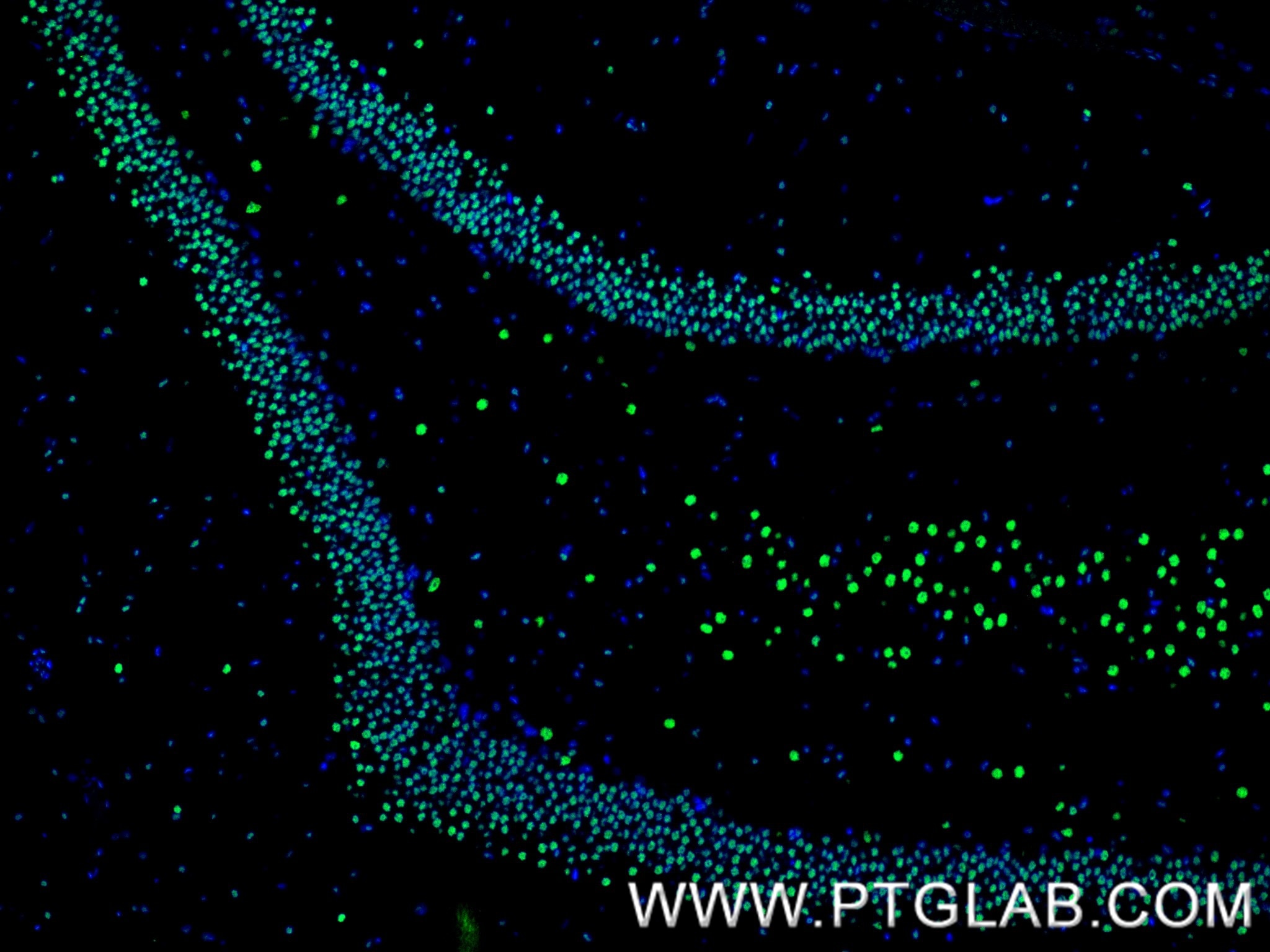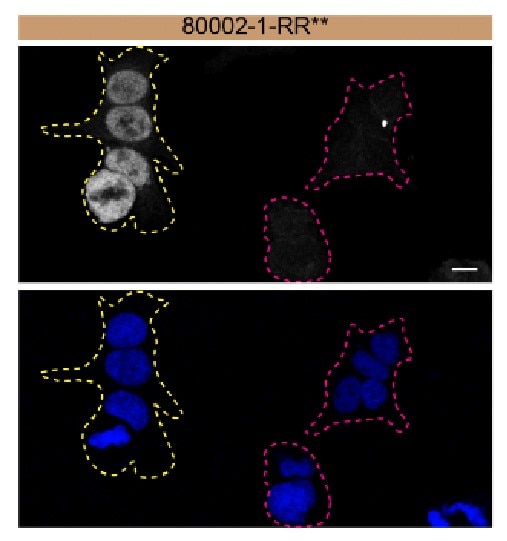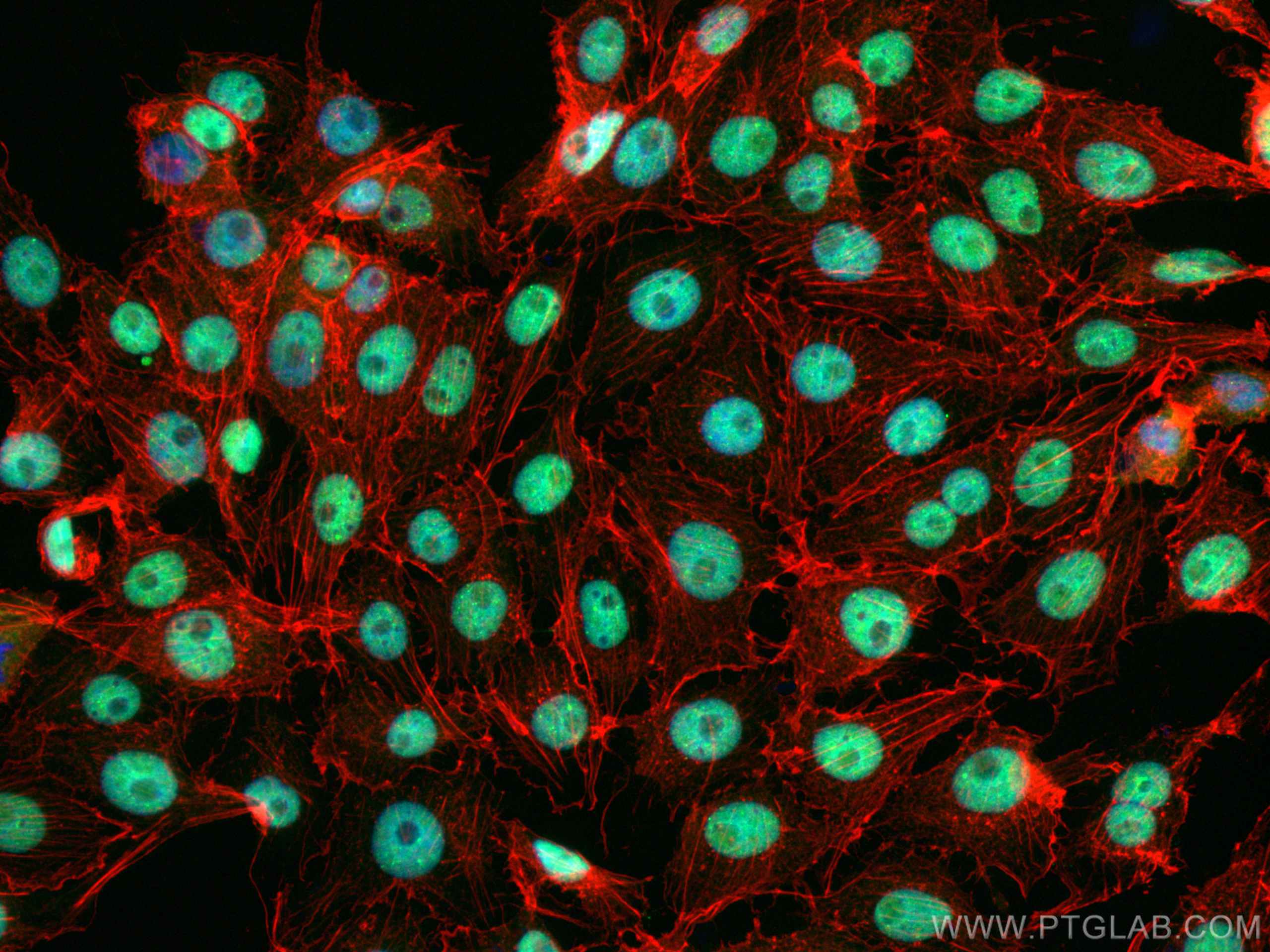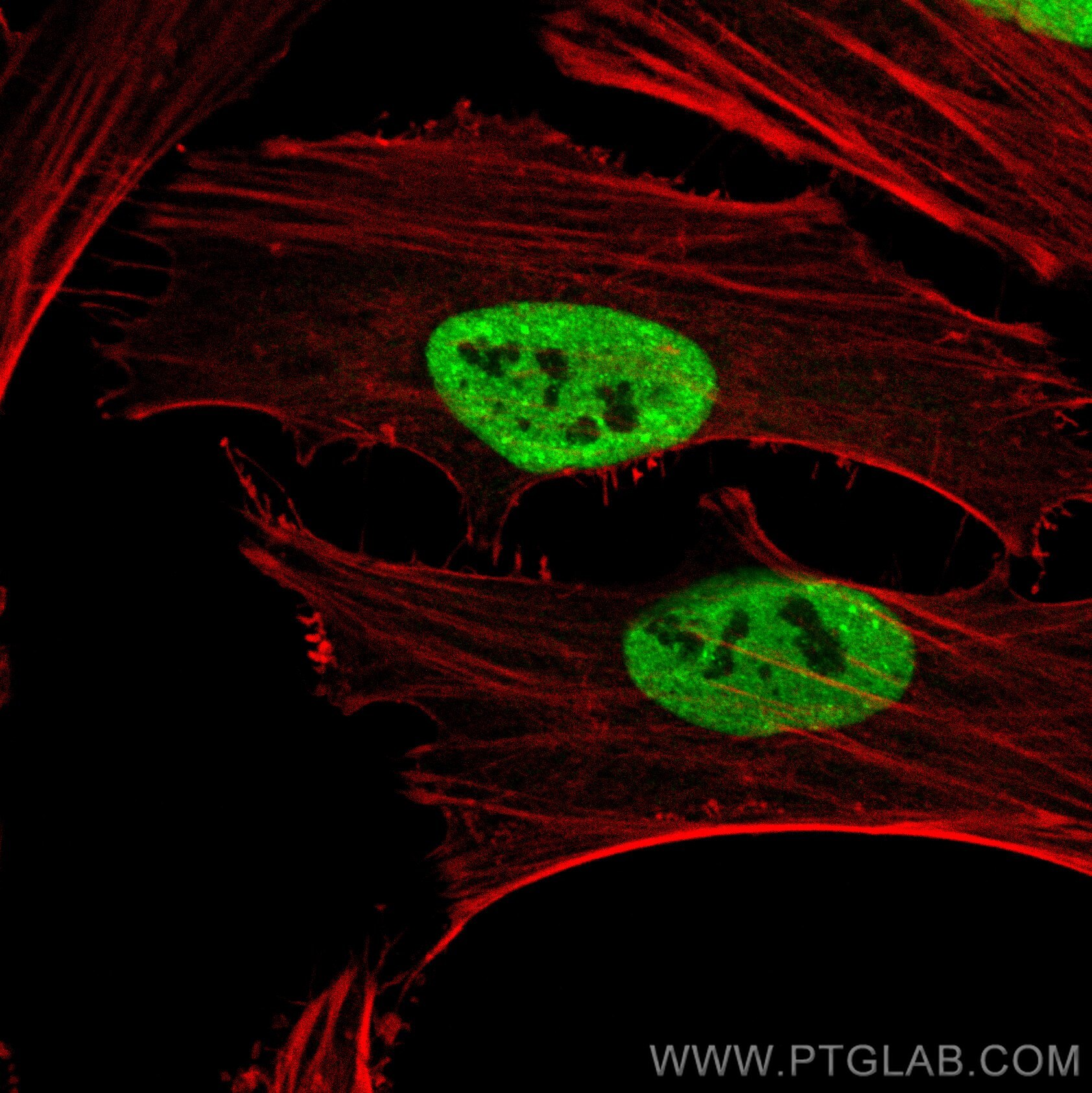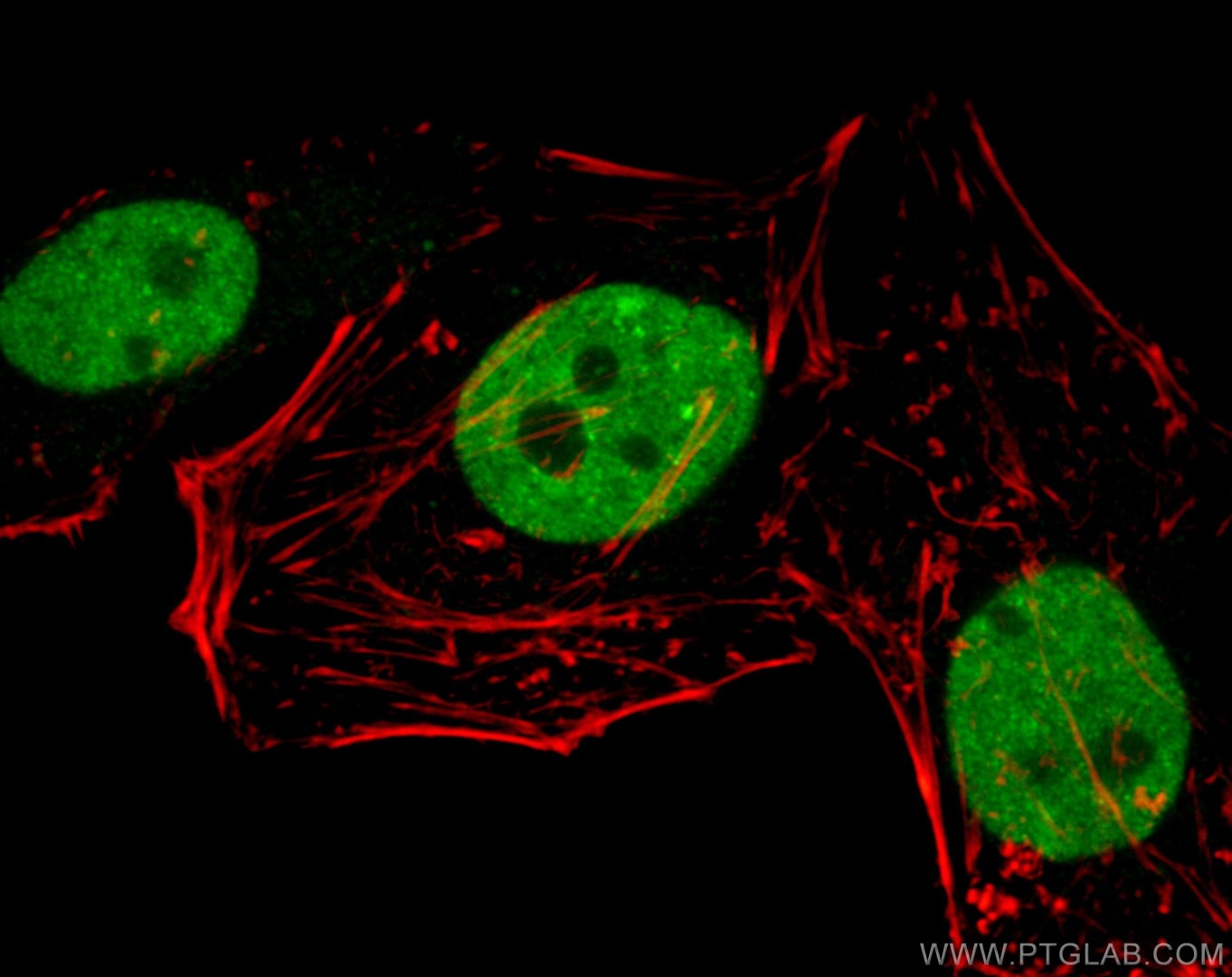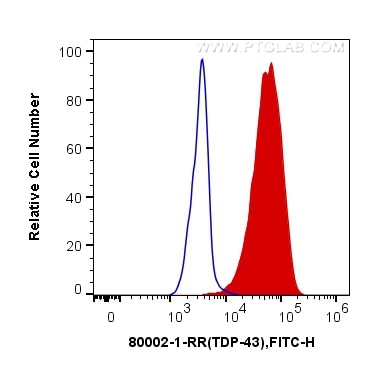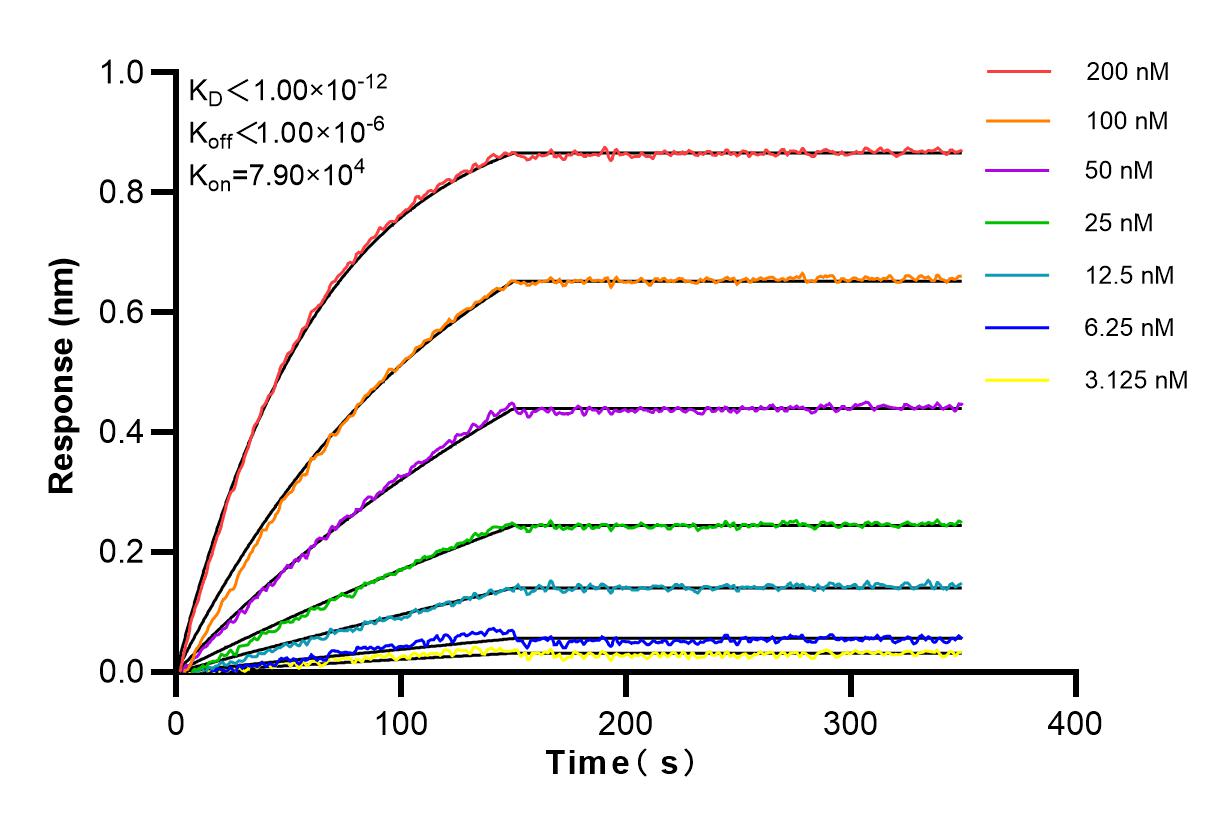- Phare
- Validé par KD/KO
Anticorps Recombinant de lapin anti-TDP-43 (N-terminal)
TDP-43 (N-terminal) Recombinant Antibody for WB, IHC, IHC-Autostainer, IF/ICC, IF-P, FC (Intra), IP, ELISA
Hôte / Isotype
Lapin / IgG
Réactivité testée
Humain, rat, souris
Applications
WB, IHC, IHC-Autostainer, IF/ICC, IF-P, FC (Intra), IP, ELISA
Conjugaison
Non conjugué
CloneNo.
16A22
N° de cat : 80002-1-RR
Synonymes
Galerie de données de validation
Applications testées
| Résultats positifs en WB | cellules HeLa, cellules C6, cellules K-562, cellules Neuro-2a |
| Résultats positifs en IP | HAP1 cells, cellules HeLa |
| Résultats positifs en IHC-Autostainer | tissu cérébral humain, |
| Résultats positifs en IHC | tissu cérébral de souris, tissu cérébral humain il est suggéré de démasquer l'antigène avec un tampon de TE buffer pH 9.0; (*) À défaut, 'le démasquage de l'antigène peut être 'effectué avec un tampon citrate pH 6,0. |
| Résultats positifs en IF-P | tissu cérébral de rat, |
| Résultats positifs en IF/ICC | cellules HeLa, cellules HepG2, cellules SH-SY5Y |
| Résultats positifs en FC (Intra) | cellules HeLa |
Dilution recommandée
| Application | Dilution |
|---|---|
| Western Blot (WB) | WB : 1:5000-1:50000 |
| Immunoprécipitation (IP) | IP : 0.5-4.0 ug for 1.0-3.0 mg of total protein lysate |
| Immunohistochimie (IHC)-AUTOSTAINER | IHC-AUTOSTAINER : 1:50-1:500 |
| Immunohistochimie (IHC) | IHC : 1:1600-1:6400 |
| Immunofluorescence (IF)-P | IF-P : 1:800-1:3200 |
| Immunofluorescence (IF)/ICC | IF/ICC : 1:200-1:800 |
| Flow Cytometry (FC) (INTRA) | FC (INTRA) : 0.40 ug per 10^6 cells in a 100 µl suspension |
| It is recommended that this reagent should be titrated in each testing system to obtain optimal results. | |
| Sample-dependent, check data in validation data gallery | |
Applications publiées
| WB | See 3 publications below |
| IHC | See 1 publications below |
| IF | See 3 publications below |
| IP | See 1 publications below |
Informations sur le produit
80002-1-RR cible TDP-43 (N-terminal) dans les applications de WB, IHC, IHC-Autostainer, IF/ICC, IF-P, FC (Intra), IP, ELISA et montre une réactivité avec des échantillons Humain, rat, souris
| Réactivité | Humain, rat, souris |
| Réactivité citée | Humain, souris |
| Hôte / Isotype | Lapin / IgG |
| Clonalité | Recombinant |
| Type | Anticorps |
| Immunogène | TDP-43 (N-terminal) Protéine recombinante Ag1231 |
| Nom complet | TAR DNA binding protein |
| Masse moléculaire calculée | 43 kDa |
| Poids moléculaire observé | 43 kDa |
| Numéro d’acquisition GenBank | BC001487 |
| Symbole du gène | TDP-43 |
| Identification du gène (NCBI) | 23435 |
| Conjugaison | Non conjugué |
| Forme | Liquide |
| Méthode de purification | Purification par protéine A |
| Tampon de stockage | PBS with 0.02% sodium azide and 50% glycerol |
| Conditions de stockage | Stocker à -20°C. Stable pendant un an après l'expédition. L'aliquotage n'est pas nécessaire pour le stockage à -20oC Les 20ul contiennent 0,1% de BSA. |
Informations générales
The TARDBP gene encodes the TDP-43 protein, initially found to repress HIV-1 transcription by binding TAR DNA. TDP-43 has since been shown to bind RNA as well as DNA, and have multiple functions in transcriptional repression, translational regulation and pre-mRNA splicing. For instance, it is reported to regulate alternate splicing of the CTFR gene.
In 2006 Neumann et al. found that hyperphosphorylated, ubiquitinated and/or cleaved forms of TDP-43, collectively known as pathological TDP-43, play a major role in the disease mechanisms of ubiquitin-positive, tau- and alpha-synuclein-negative frontotemporal dementia (FTLD-U) and in amyotrophic lateral sclerosis (ALS).
Proteintech's 80002-1-RR is a rabbit recombinant TDP-43 antibody recognizing N-terminal TDP-43. It recognizes the intact 43 kDa protein as well as all posttranslationally modified and truncated forms in multiple applications. Various forms of TDP-43 exist, including 18-35 kDa of cleaved C-terminal fragments, 45-50 kDa phospho-protein, 55 kDa glycosylated form, 75 kDa hyperphosphorylated form, and 90-300 kDa cross-linked form. (PMID: 17023659, 19823856, 21666678, 22193176)
Recently TDP-43 has been reported to be overexpressed in triple negative breast cancer (TNBC) and it may be a potential target for TNBC diagnosis and drug design. (PMID: 29581274)
80002-1-RR antibody works well in IF experiment.
Protocole
| Product Specific Protocols | |
|---|---|
| WB protocol for TDP-43 (N-terminal) antibody 80002-1-RR | Download protocol |
| IHC protocol for TDP-43 (N-terminal) antibody 80002-1-RR | Download protocol |
| IF protocol for TDP-43 (N-terminal) antibody 80002-1-RR | Download protocol |
| IP protocol for TDP-43 (N-terminal) antibody 80002-1-RR | Download protocol |
| Standard Protocols | |
|---|---|
| Click here to view our Standard Protocols |
Publications
| Species | Application | Title |
|---|---|---|
bioRxiv Patient-derived Induced Pluripotent Stem Cells as a Model to Study Frontotemporal Dementia Pathologies | ||
Nat Chem Biol Small-molecule dissolution of stress granules by redox modulation benefits ALS models | ||
Neural Regen Res 5-Hydroxytryptamine: a potential therapeutic target in amyotrophic lateral sclerosis | ||
F1000Res The identification of high-performing antibodies for TDP-43 for use in Western Blot, immunoprecipitation and immunofluorescence | ||
